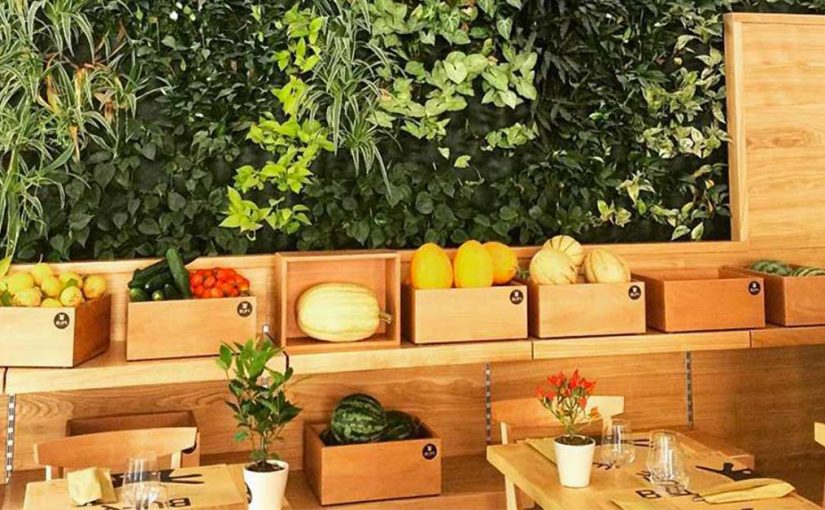Organic restaurant. As people become more aware of environmental pollution, they increasingly prefer to go to an organic restaurant. Obviously this is not only the result of an interest in the environment but a real trend that is involving everyone and in any commercial sector.
So here they start popping up everywhere the vegan restaurant that offers a menu completely different from what we are used to find in any restaurant.
Organic restaurant
The number of vegetarian-style restaurants has increased by over 300% only since 2012!
The vegan restaurant is born from a real philosophy of life. Many restaurateurs marry it because they believe in it and want to share with the public their way of life, but for many others it is just a form of business.
Organic restaurant
The vegan restaurant was born from a true philosophy and the desire for a healthy life.
The owner, who became it himself after adopting this lifestyle, knew that there were many benefits to eating cleaner; not only does it make your body healthier, but it also improves mental clarity! With more time on his hands, he decided that instead of complaining about the lack of space in nursing homes, as some people do when they face old age, would build an entire business around helping others lead a happier life at any stage with compassion, continuing to follow their own beliefs until death itself?
What are the characteristics of a good organic restaurant?
Organic restaurant
- Generally we prefer fresh, local and seasonal ingredients and maybe even having an organic certification.
- A philosophy of ethical and sustainable consumption.
- Organic and natural furnishings, consistent with the image of the restaurant.

But what does the gastronomic offer to an organic restaurant and what have to do?
When we take a look at the culinary trends of organic restaurants, we note a particular preference for: seasonal fruits and vegetables, grains, tubers, whole grains, seeds, nuts and vegetable or animal proteins. With these ingredients, each activity then uses its imagination to create tasty and healthy dishes.
Some examples of interesting dishes are bowls or a main dish consisting of salads in a single dish, substantial, rich in nutrients, colors and flavors. The formula consists in using proteins, a side dish of vegetables or legumes, a cereal base (quinoa, rice, cous cous or bulgur), a sauce and dried fruit or seeds for a touch of crunchiness
If we talk about appetizers and pasta dishes then we can find two very popular ones:
Organic restaurant
- The famous and tasty hummus is the king of organic menus. The classic recipe involves the use of chickpeas, but it can also be prepared with lentils, beetroot, carrots, etc. Hummus is a cream that accompanies vegetables and appeals to most customers
- Another popular dish is vegetable chips, a healthy alternative to French fries. These are vegetables and fruit fried in organic olive oil (carrot, pumpkin, courgette, aubergine, banana).
But let’s not forget the timeless pizza, easily adaptable to everyone’s needs. It can be prepared with various flours, based on cereals and even protein.
Hamburgers are another popular option. These burgers are prepared with meat from animals from organic farms or organic vegetable products. For vegetarian or vegan customers the choice is vast and consists of seitan burgers, tofu, quinoa, lentils, beetroot and chickpeas, paired with various cereal breads, some of which are also gluten-free and of course combined with cheeses, vegetables and sauces.
Organic restaurant

Eating healthy and with organic products also means taking care of yourself and your health. One of the advantages of organic restaurants is being a type of activity that allows you to serve food at all hours! Customers will choose your business at any time of the day if they are sure of consuming a healthy and environmentally friendly meal. As a result, don’t skimp on the offer!
The decoration Organic restaurant
The target consumers in organic restaurants want to eat in peace, in a relaxing environment and encourage them to come back to visit you. Always focus on quality materials, simple and light, perhaps with an eye to the territory and local craftsmanship. Our beautiful country is famous throughout the world for the skill of our excellent craftsmen.
In any case, the idea is to use:
- wood, stone, bamboo. Recyclable crockery.
- Napkins and tablecloths in cotton cloth or in truly biodegradable materials.
- Restored or vintage tables, chairs and furnishings.
- fresh plants and flowers
Always pay attention to what you display in your restaurant and to the validity of what you propose. Clients are not stupid and if they have any doubts about the veracity of your choices, they could bring you bad publicity:
- Always use organic seasonal fruit even if it may have cosmetic defects. A good consumer of organic products knows that the goodness of the product does not depend on a shiny shell without imperfections.
- Make sure that your dishes are always balanced and never high in calories.
- It explicitly avoids the use of plastic or toxic materials.
Good luck!


